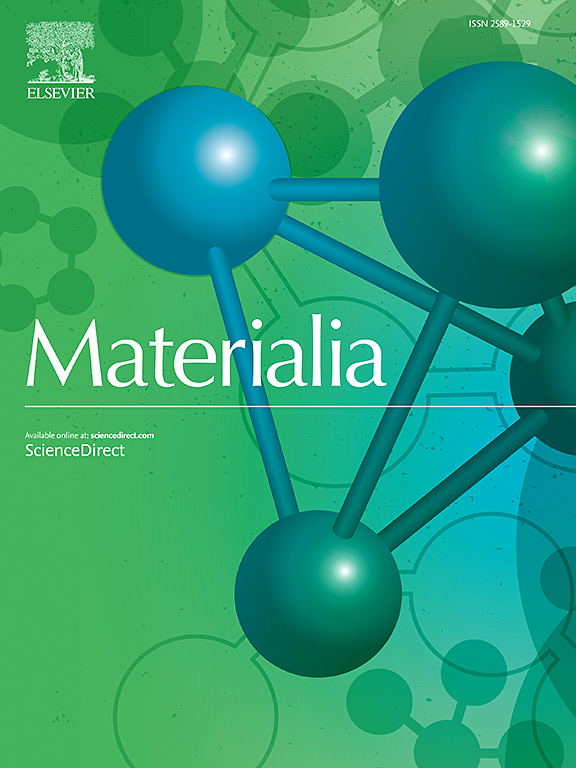Numerical simulation of solidification within the shot sleeve of high-pressure die casting and the prediction of secondary dendrite arm spacing for externally solidified crystals
IF 3
Q2 MATERIALS SCIENCE, MULTIDISCIPLINARY
引用次数: 0
Abstract
The formation of externally solidified crystals (ESCs) within the shot sleeve of cold chamber high-pressure die casting (HPDC) is undesirable for mechanical properties, as it is often associated with defects (oxides and shrinkage porosities). Understanding the solidification conditions within the shot sleeve is critical to reduce the formation of ESCs. Using finite element simulations, the effect of interfacial heat transfer coefficient , fill volume (, and piston displacement has been simulated to systematically investigate the development of thermal gradient and solid fraction. More emphasis is provided on the temperature loss and solidification occurring at distances up to 5 mm from the alloy-shot sleeve interface as a function of and . Simulation results indicate that the onset of solidification along the wall regions (up to 2 mm) occurs within 0.5 s after complete filling for all 5 kW/m²K. Under standard HPDC operating conditions and for a given alloy composition, increasing the from 20 to 40 % can significantly decrease the total solid fraction (from 20 % to 10 %) along the sleeve wall. Based on the cooling rate predicted from numerical simulations and correlating the solidification conditions with unsteady (un-constrained) directional solidification studies for Al-7Si alloys, both high-growth and slow-growth regimes are identified. Using the relationships between growth rate and cooling rate with secondary dendritic arm spacing (SDAS), the locations for the growth of large size ESCs and cold flakes with finer SDAS are predicted as a function of and distance from the alloy-shot sleeve interface. Potential mechanisms for the origin, growth of large size ESCs and migration during piston displacement have been discussed.
高压压铸液套内凝固数值模拟及外凝固结晶二次枝晶臂间距预测
在冷室高压压铸(HPDC)的射套内形成外部凝固晶体(ESCs)对机械性能来说是不可取的,因为它通常与缺陷(氧化物和缩孔率)有关。了解喷丸套内的凝固条件对于减少ESCs的形成至关重要。采用有限元模拟方法,模拟了界面换热系数(h)、填充体积(fv)和活塞位移的影响,系统地研究了热梯度和固相分数的发展规律。更强调的是温度损失和凝固作为h和fv的函数发生在距离合金弹套界面5毫米处。模拟结果表明,当h≥5 kW/m²K时,沿壁区(最大2mm)的凝固发生在充填完成后0.5 s内。在标准HPDC操作条件下,对于给定的合金成分,将fv从20%提高到40%可以显著降低沿套壁的总固相分数(从20%降低到10%)。基于数值模拟预测的冷却速率,并将Al-7Si合金的凝固条件与非定常(无约束)定向凝固研究相结合,确定了Al-7Si合金的高生长和慢生长两种状态。利用生长速率和冷却速率与二次枝晶臂间距(SDAS)之间的关系,预测了大尺寸ESCs和具有更细SDAS的冷片的生长位置作为h和距合金弹套界面距离的函数。讨论了大尺寸ESCs的起源、生长和活塞位移过程中迁移的潜在机制。
本文章由计算机程序翻译,如有差异,请以英文原文为准。
求助全文
约1分钟内获得全文
求助全文
来源期刊

Materialia
MATERIALS SCIENCE, MULTIDISCIPLINARY-
CiteScore
6.40
自引率
2.90%
发文量
345
审稿时长
36 days
期刊介绍:
Materialia is a multidisciplinary journal of materials science and engineering that publishes original peer-reviewed research articles. Articles in Materialia advance the understanding of the relationship between processing, structure, property, and function of materials.
Materialia publishes full-length research articles, review articles, and letters (short communications). In addition to receiving direct submissions, Materialia also accepts transfers from Acta Materialia, Inc. partner journals. Materialia offers authors the choice to publish on an open access model (with author fee), or on a subscription model (with no author fee).
 求助内容:
求助内容: 应助结果提醒方式:
应助结果提醒方式:


